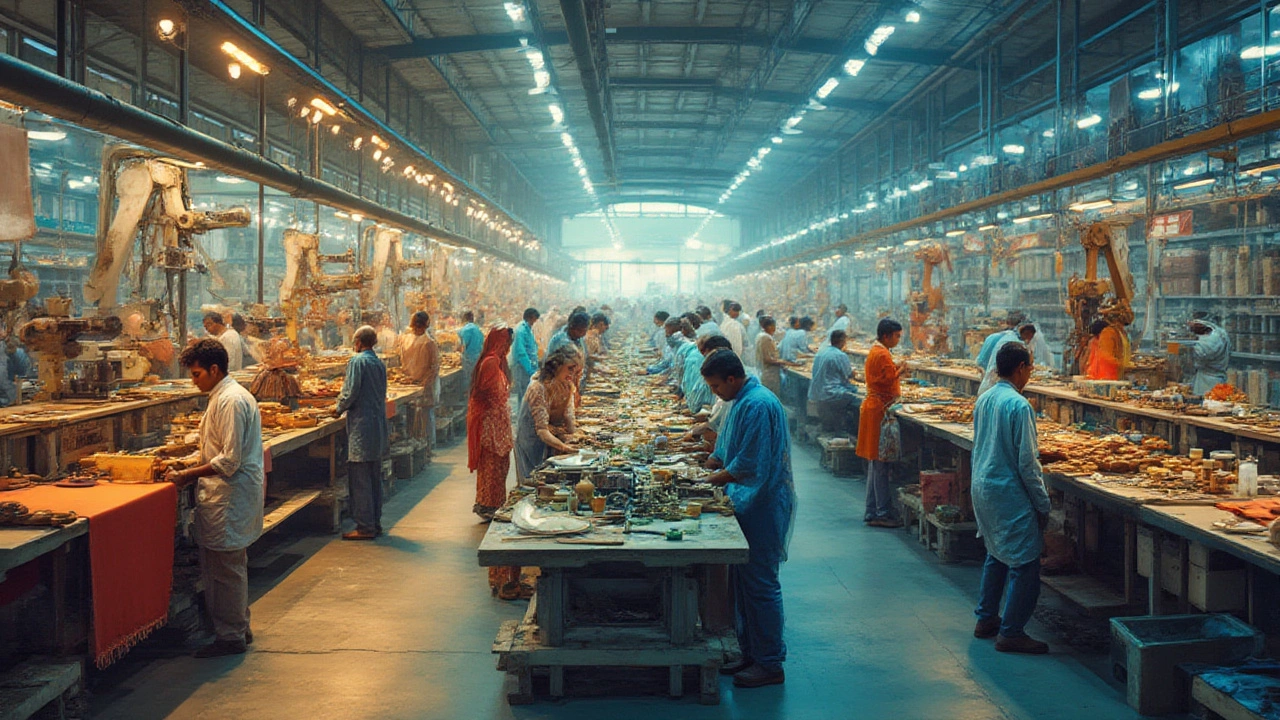
5 Types of Manufacturing Methods Explained: A Guide for 2025
Discover the five main types of manufacturing, including real examples, practical tips, and why these processes matter for today's products and businesses.
When talking about Production Methods, the set of techniques and processes used to turn raw materials into finished goods. Also known as manufacturing processes, it forms the backbone of every factory, from tiny workshops to sprawling plants. Lean Manufacturing, a systematic approach that eliminates waste and maximizes value sits on top of these methods, demanding precise flow and continuous improvement. 5S Methodology, a workplace organization system focusing on Sort, Set in order, Shine, Standardize, Sustain complements lean by keeping the floor tidy and safe. Finally, Chemical Production, the specialized processes that create chemicals, polymers, and complex compounds showcases how production methods adapt to high‑tech sectors.
Production methods encompass a range of sub‑topics. For instance, lean manufacturing requires value‑stream mapping, which visualizes the flow of materials and information, revealing bottlenecks that slow down output. This mapping enables managers to apply the 5S methodology, turning chaotic workstations into orderly zones that boost safety and speed. Meanwhile, chemical production relies on precision measurement—think of the thousandth of an inch that defines a machined part’s tolerance—so that reactions stay controlled and yields stay high. The interplay between precise measurement and systematic organization means that a well‑run production line can handle anything from plastic injection molding to steel rolling without sacrificing quality.
In 2025, manufacturers face pressure to cut costs, meet environmental standards, and deliver products faster. Production methods answer these challenges by providing frameworks that are both flexible and robust. Lean manufacturing reduces waste, which directly lowers energy consumption—a key metric for companies eyeing green certifications. 5S, on the other hand, improves worker morale because a clean, organized floor reduces accidents and makes daily tasks easier. Chemical production illustrates how specialized methods can unlock new markets; for example, India’s push into semiconductor manufacturing demands ultra‑clean production environments and strict process controls.
Each of the posts listed below dives into a facet of these broader themes. You’ll find practical steps to pick a winning product idea for a startup, a deep dive into India’s pharma rankings, and a look at how plastic waste hotspots influence manufacturing choices. There are also guides on measuring a thousandth of an inch, implementing 5S in food processing, and evaluating the profitability of manufacturing in 2025. By tying real‑world examples to the core concepts of production methods, the collection helps you see how theory translates into profit, safety, and sustainability on the shop floor.
Ready to explore the full range of content? Below you’ll discover articles that break down market‑validation techniques for new products, rankings of top chemical manufacturers, and step‑by‑step guides for exporting cars—all through the lens of efficient production methods. Grab the insights that match your industry, whether you’re shaping a startup, optimizing an existing plant, or simply curious about how things are made.

Discover the five main types of manufacturing, including real examples, practical tips, and why these processes matter for today's products and businesses.